The E9 was delivered to the Milwaukee Road by EMD in April 1956 as No. 202A. It was part of six sets of A-B-A E9s to be used on Union Pacific’s “Cities” streamliners the Milwaukee began operating between Chicago and Omaha in 1955. All were delivered in UP yellow colors. The numbering sequence for the third set was 202A, 202B, and 202C. In the 1959 Milwaukee Road fleet renumbering the set became 32A, 32B, and 32C. Eventually the units were used on other Milwaukee Road passenger services, such as the Olympian Hiawatha between Chicago and Seattle/Tacoma and the Morning Hiawatha and Afternoon Hiawatha between Chicago and the Twin Cities. In 1971 the unit began service for Amtrak, officially leaving the Milwaukee Road roster in June 1974. Amtrak had the unit rebuilt at the Milwaukee Shops where it lost its side porthole windows and was renumbered 434. It remained on Amtrak’s roster until 1982.
It was then sold to the Alaska Railroad where it was renumbered 2402. It toiled in the 49th state until 1986 when it was purchased by Wisconsin’s Northern Rail Car Leasing and numbered 10C. Northern Railcar founded Scenic Rail Dining, which between 1987 and 1990 operated a high-end dinner train out of North Milwaukee, Wis., on a portion of the former Milwaukee Road to Horicon, Wis., owned by the Wisconsin & Southern Railroad. In 1988, Northern Rail Car, owned by William Gardner purchased the Wisconsin & Southern. When the dinner train was discontinued in 1990, Wisconsin & Southern retained the unit for its business train. The unit was rebuilt, including restoration of its porthole windows, and eventually renumbered 101 when an E9B was leased from Illinois Railway Museum and rebuilt to operate with 10C and Wisconsin & Southern’s other E9A, 10A, a former UP unit.
After Watco acquired Wisconsin & Southern in 2011, it sold the 10A to Iowa Pacific and the E9B was returned to the Illinois Railway Museum. The 10C was retained but saw minimal use. According to the Friends, the railroad hoped to see the locomotive go to a good home that would continue to use it and keep it in good working order, not rusting away in a museum or going to scrap. Longtime Friends of the 261 members Robert Schroeder and Mary Walters provided key support for the acquisition.
Friends of the 261 President and Chief Operating Officer Steve Sandberg says the E unit will be a great addition to the organization. “To have an original Milwaukee Road E-unit in our fleet is just amazing,” he says. “We can use this unit both to supplement 261 operations and allow us to run trips where it might be too expensive to operate 261. It will open up a lot of new markets for us. Of course, an E9, like 261, is an attraction itself.”
Like No. 261, the locomotive has a Sandberg family connection. It was once operated by Sandberg’s grandfather, Frank E. Sandberg Sr. The elder Sandberg was a Milwaukee Road engineer on the River Division operating passenger trains between Minneapolis and La Crosse, Wis. Steve Sandberg’s father, the late Frank E. Sandberg Jr. frequently rode with his father on passenger runs, and after Steve was born he brought his son along as well.
“It’s a pretty safe bet I rode this unit as a boy,” Steve Sandberg says.
When Sandberg Sr. retired after 52 years of service in 1970, No. 32A was the lead locomotive on his last run, the Morning Hiawatha from La Crosse to Minneapolis. On arrival at the Minneapolis depot his family greeted him as he stepped from the cab for the last time, including his young grandson.
Sandberg says the unit needs minor mechanical work, and then will be repainted. But it won’t be painted Union Pacific yellow, the scheme it wore in Milwaukee Road days. The Friends fleet is all painted in the orange and maroon colors used by the Milwaukee until it began operating the UP streamliners, and having a yellow unit wouldn’t match the train. After World War II the Milwaukee Road used a variety of paint schemes on its passenger diesels, and Sandberg says he is studying which one might be appropriate to use in lieu of yellow.
Friends of the 261 is asking for donations to go toward repainting the locomotive and for mechanical work. The organization hopes to have the unit ready to pull trips sometime in 2019.





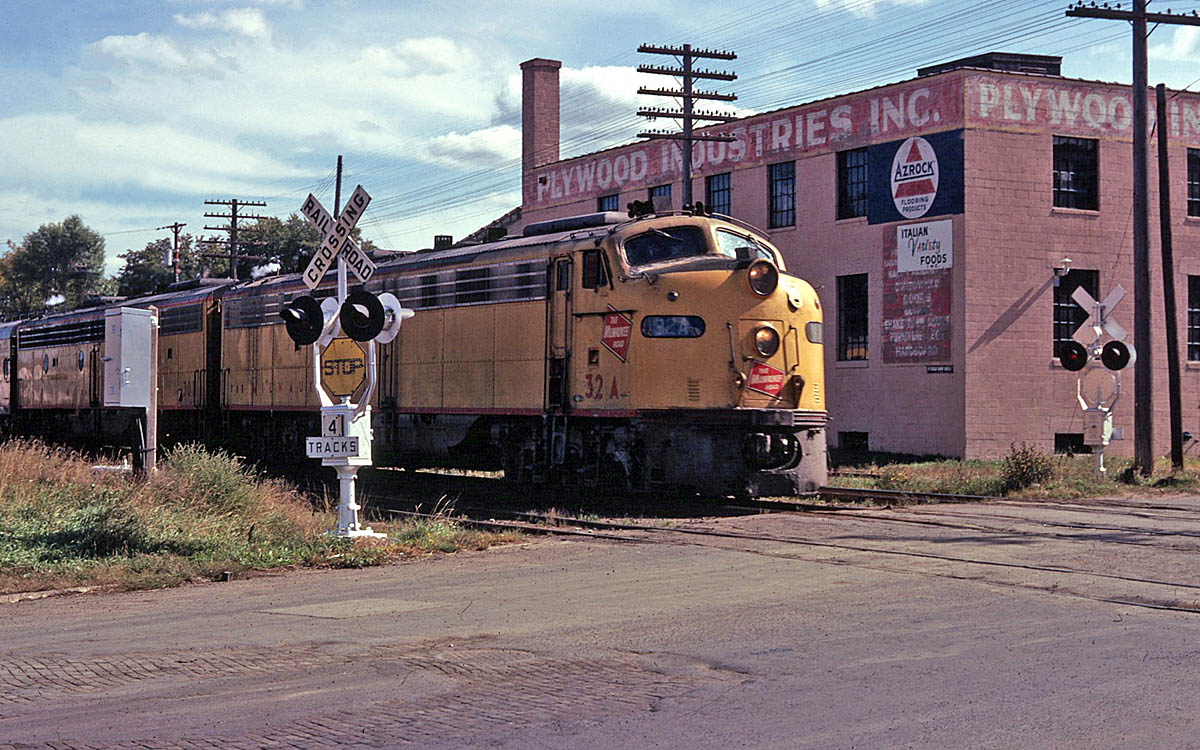
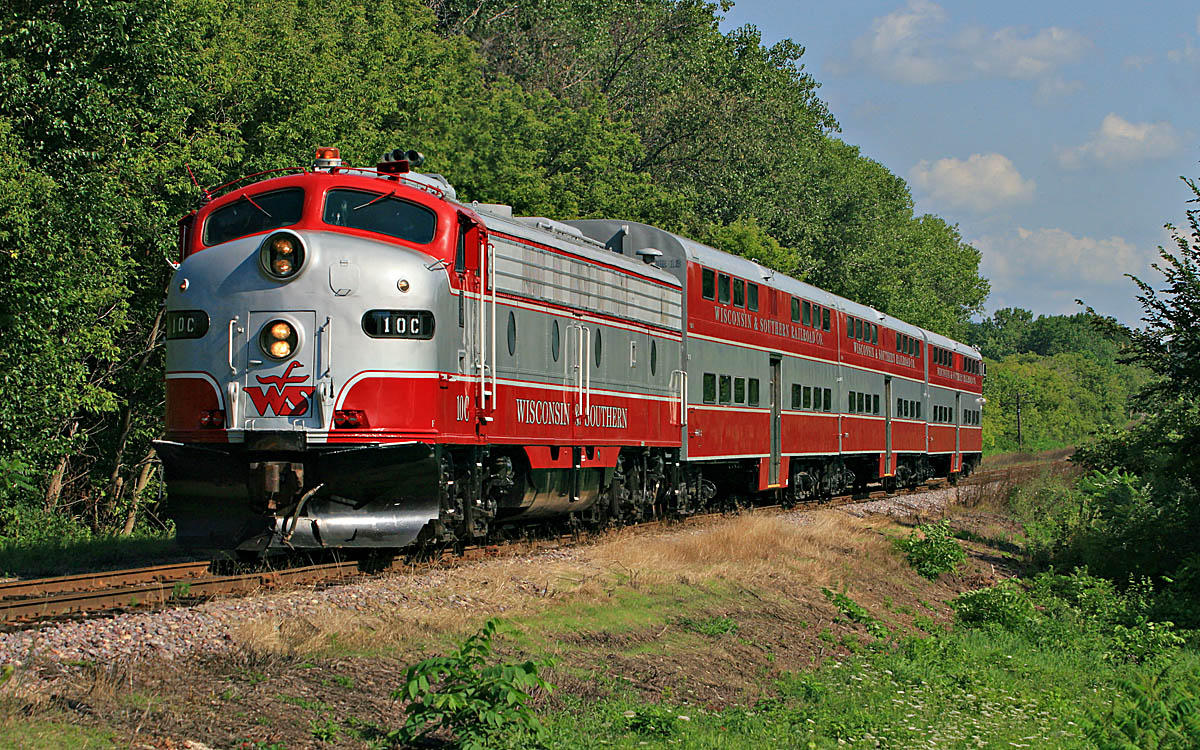

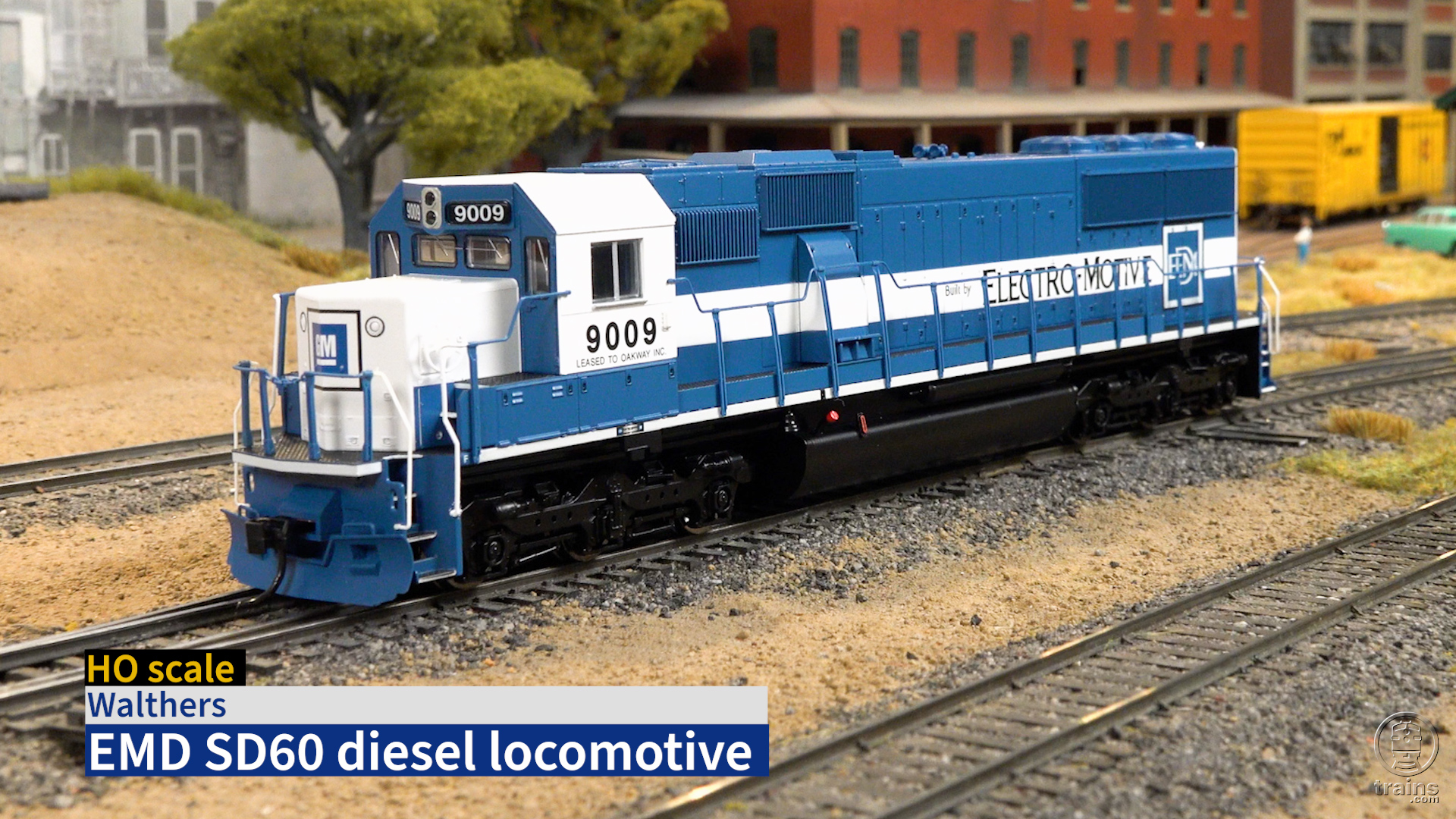
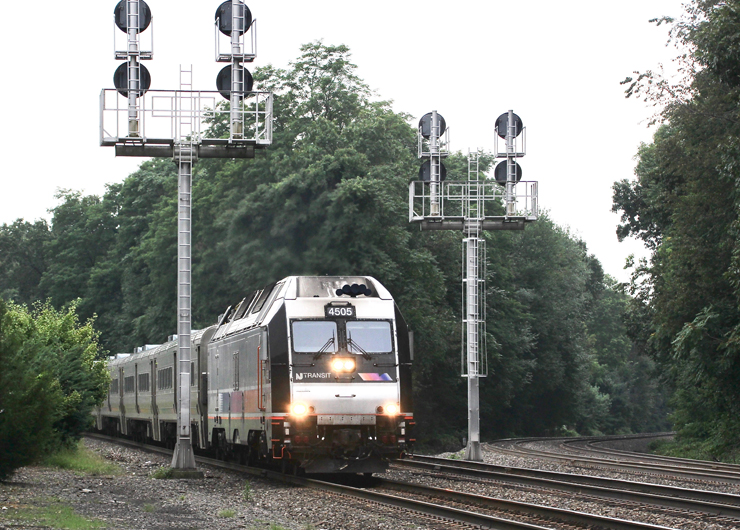
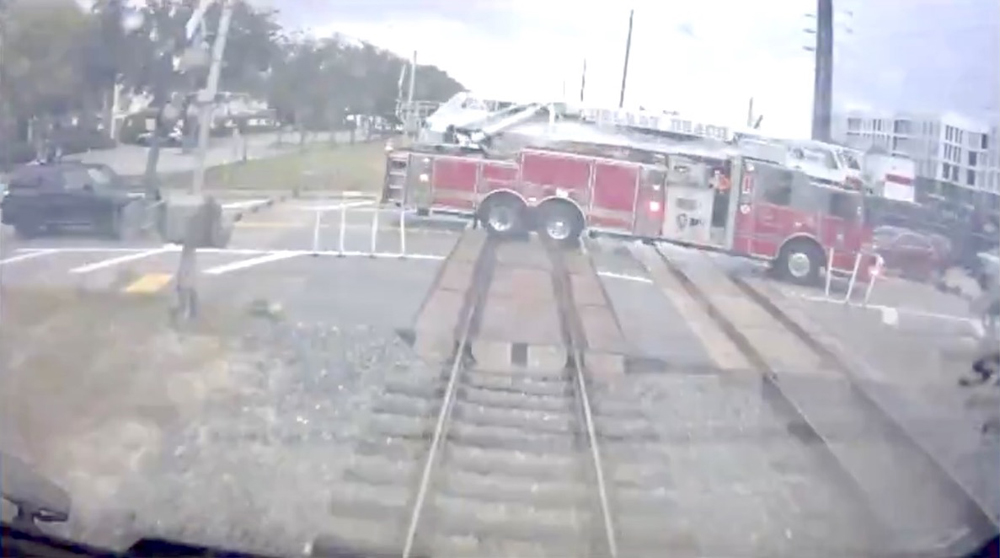
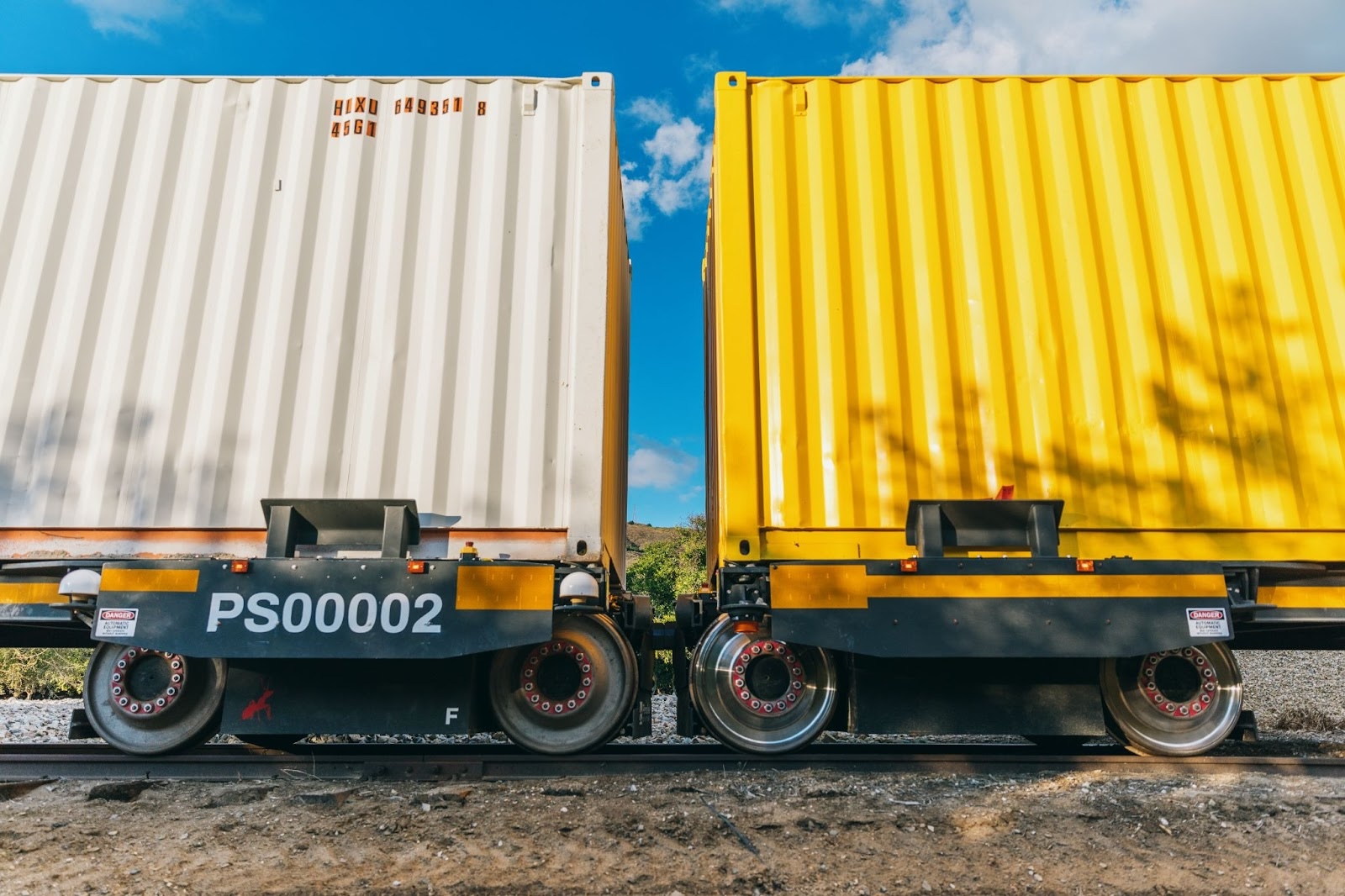




I thought IRM has two Milwaukee E-9’s one for parts and one in the middle of restoration.
TRRB – Joseph, I’m not sure anyone will build a new Skytop lounge. Nonetheless, the Hiawatha lives on as the name of Amtrak’s most successful corridor. Trains run frequently, run on time, and carry many more people than before. After the growth spurt of ten or fifteen years ago, traffic seems to have stabilized at a very high level.
Stations: MKE The tired, hideous 1965 architectural bomb in downtown Milwaukee was completely rebuilt in a fresh modern style. Although technically it isn’t an all-new building, it sure looks like one inside and out. If I hadn’t been around for the rebuild, I’d not have known it was the same structure. The new train shed, which is magnificent, came more recently.
MKA Milwaukee Airport. A gorgeous little gem of a station in the Frank Lloyd Wright (Wisconsin native) is an all-new stop. I’m not sure it serves many airline passengers but is a much-needed south suburban stop.
Sturtevant, an all-new station a mile north of the old rotting old wooden outhouse, Sturtevant is a park-ride for the far-south suburbs and for Racine.
Glenview (Illinois) an all-new architectural masterpiece on the site of the former Metra/ Amtrak station which actually wasn’t all that old to begin with. This is the third Glenview station in my memory going back to 1972, my first ride on this line.
Chicago Union Station is in the midst of its second rebuild.
Also of note, although it’s not an Amtrak stop, the Metra stop at Glen is a successful, popular new station serving a new town at the site of the former Glenview Naval Air Station.
America has its problems and Illinois is nearly bankrupt, but you’d never know it riding the Hiawatha. From end to end, all you see is prosperity and growth.
I have a photo showing 10C pulling Circus Train thru Neenah, WI
It will be interesting to see how an E-9 comes across in traditional Milwaukee dress. One may hearken back to the “Fab Four.” Congratulation to Steve Sandberg and the Friends.
“The fully operable locomotive last saw service as part of the railroad’s business train fleet” All the above did not say if the locomotive is equipped with Positive Train Control. With what ever type of brake valve it has, can it be equipped with PTC to lead 261 train trips? That may get them to branch lines where the steam can lead.